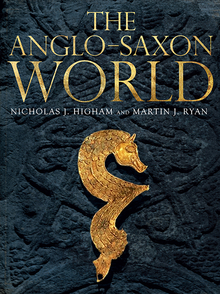Holy Bones, Holy Dust
WARNING
You are viewing an older version of the Yalebooks website. Please visit out new website with more updated information and a better user experience: https://www.yalebooks.com
How Relics Shaped the History of Medieval Europe
Charles Freeman
A richly textured history spanning a thousand years of holy relics across Europe
Relics were everywhere in medieval society. Saintly morsels such as bones, hair, teeth, blood, milk, and clothes, and items like the Crown of Thorns, coveted by Louis IX of France, were thought to bring the believer closer to the saint, who might intercede with God on his or her behalf. In the first comprehensive history in English of the rise of relic cults, Charles Freeman takes readers on a vivid, fast-paced journey from Constantinople to the northern Isles of Scotland over the course of a millennium.
In Holy Bones, Holy Dust, Freeman illustrates that the pervasiveness and variety of relics answered very specific needs of ordinary people across a darkened Europe under threat of political upheavals, disease, and hellfire. But relics were not only venerated—they were traded, collected, lost, stolen, duplicated, and destroyed. They were bargaining chips, good business and good propaganda, politically appropriated across Europe, and even used to wield military power. Freeman examines an expansive array of relics, showing how the mania for these objects deepens our understanding of the medieval world and why these relics continue to capture our imagination.
“As Freeman delves into practices across Europe, he demonstrates great ease in synthesizing — and keeping accessible — many various strains of religious thought. . . . The same is true of his treatment of the histories of the Crusades, the rise of the Byzantine Empire, the Italian city-states, the challenge of Protestantism. . . . It’s no easy feat to encapsulate these subjects, and yet Freeman . . . pulls it off with great authority and insight.”—Nick Owchar, Los Angeles Times
'In Holy Bones, Holy Dust, Charles Freeman presents the massive history of relic veneration in a way that is at the same time comprehensive, compulsive and accessible. This is no mean achievement.'—Paul Fouracre, Frankland: The Franks and the World of Medieval Europe
“This superbly put together and elegantly written book is the first proper history of the cult of relics from the early days to Counter-Reformation. Ranging from the sublime to the ridiculous, this is a marvellous study.”—Catholic Herald
“Freeman’s book is a timely reminder of the extent to which relics were once central to mankind’s sense of identity.”—Nick Vincent, BBC History Magazine
“Holy Bones, Holy Dust offers a readable and ambitious panoramic history of medieval society, politics and religion, defined by the impetus of relics, saints cults and miraculous interventions occurring between the fall of the Roman Empire and the Reformation.”—E.L Devlin, History Today
“It is rare that a book about medieval history can keep the attention of any apart from scholars or, perhaps, live-role-play gamers. But this is just such a book. Holy Bones, Holy Dust, the latest offering from award-winning author Charles Freeman, benefits from being both exceptionally well written and having a strangely attractive subject matter.”—Tim Perry, ChristianWeek.org
“This book provides an engagingly written historical narrative supported by many detailed stories of how relics were relevant to theological, cultural, political and economic changes across medieval Europe.”—Harold Mytum, British Archaeology
“When it comes to the ancient and medieval worlds, Freeman is one of the most accessible academic writers around, and he does not disappoint in this book.”—Nigel Nelson, The Tribune
“Scholars and students who wish to understand the popular religiosity of common people in medieval Western Europe will greatly benefit from reading this book.”—Daniel Jeyaraj, Theological Book Review
“…The book is a splendid read.”—Blue Guides
"This fascinating book provides the necessary background for an understanding of what is today seen as something a little bizarre" — Good Book Guide
Publication Date: November 20, 2012
16 pp. b/w illus.









